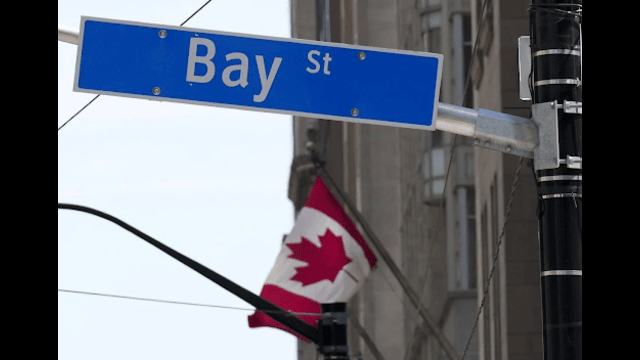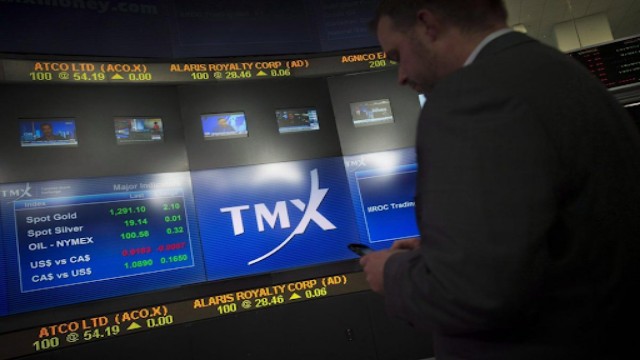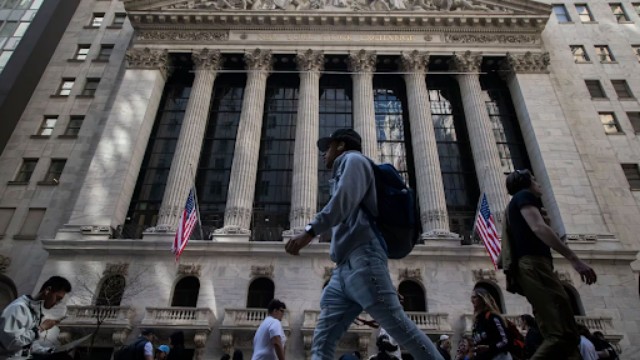
Bay Street’s financial district in Toronto is seen with a Canadian flag on display, Friday, August 5, 2022. (Photo: Nathan Denette / The Canadian Press)
Canada’s main stock market wrapped up Friday with solid gains, lifted by strength in industrial and financial stocks. The S&P/TSX composite index closed 74.45 points higher at 25,971.93, reflecting growing investor confidence despite a week of oil price swings.
Pierre-Benoit Gauthier, vice-president of investment strategy at IG Wealth Management, pointed out that Canadian stocks handled oil market volatility remarkably well. Prices had fluctuated amid speculation about a potential nuclear agreement between the U.S. and Iran, which could have increased oil supply and hurt energy companies. Yet, the Canadian market managed to edge higher throughout the week.
“This market is showing real resilience,” Gauthier said. “There’s buying pressure from all directions, and some investors who had stepped back seem to be jumping back in as they watch the rally unfold.”
The attention now shifts to Tuesday’s upcoming inflation data from Statistics Canada. April’s annual inflation rate is expected to dip below March’s 2.3 percent, largely because April marked the end of the consumer carbon levy.
Gauthier emphasized that this new Consumer Price Index (CPI) reading will be crucial for the Bank of Canada. It’s expected to help shape the central bank’s next interest rate move in early June. “It might not be the only factor,” he noted, “but it’s a key piece in the puzzle.”
South of the border, U.S. markets also posted gains. The Dow Jones Industrial Average surged 331.99 points to 42,654.74. The S&P 500 rose 41.45 points to 5,958.38, and the Nasdaq gained 98.78 points to close at 19,211.10.
According to Gauthier, the speed of this week’s rally in U.S. markets was almost “unheard of.”
However, not all the news was upbeat. The U.S. consumer sentiment index released Friday showed a fifth consecutive monthly drop, sliding to 50.8 in May — its lowest since June 2022. Since January, the index has fallen nearly 30 percent, driven by concerns over President Trump’s tariff policies.
Still, Gauthier downplayed the decline, noting that while people may feel uneasy, they’re not changing their spending habits. “Soft data like sentiment reflects how people feel. But the real story lies in how they behave — and they’re still spending.”
U.S. government figures support this. Retail spending in April edged up just 0.1 percent after a strong 1.7 percent rise in March. The earlier jump was largely due to consumers buying cars before new tariffs took effect.
“Even if people feel like the economy is in a tough spot, they’re not holding back,” Gauthier said. “Until we see widespread job losses, spending will likely stay high — and that keeps the economy moving.”
Markets also found support this week from a 90-day pause in tariffs between the U.S. and China, plus encouraging inflation data, which may push the U.S. Federal Reserve to cut interest rates if economic growth slows.
In commodities, oil prices inched up, with July crude closing at US$61.97 a barrel. Natural gas dipped to US$3.33 per mmBTU. Meanwhile, gold fell to US$3,187.20 an ounce, and copper slipped to US$4.59 per pound.
The Canadian dollar remained steady at 71.54 cents US, up slightly from Thursday.















